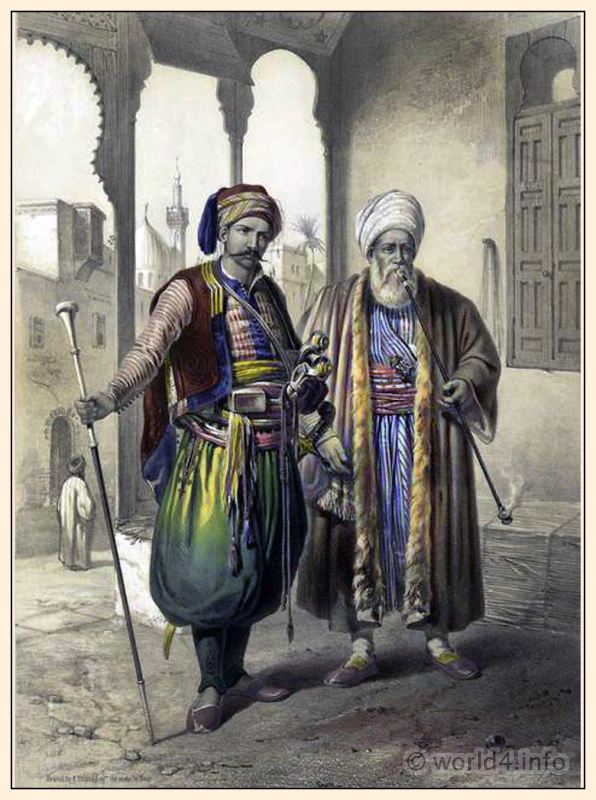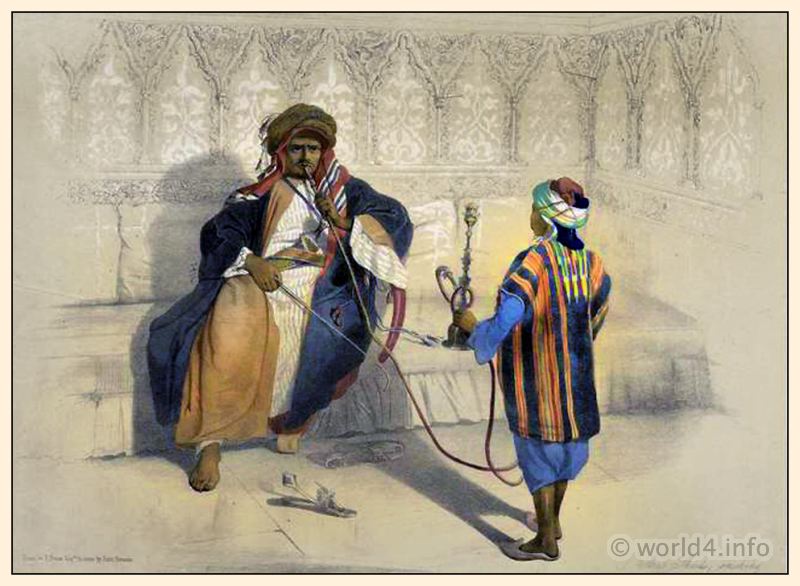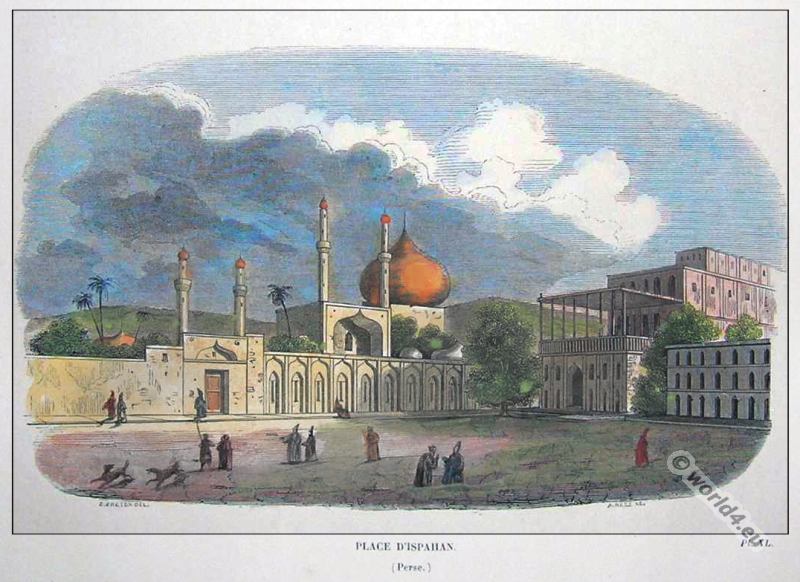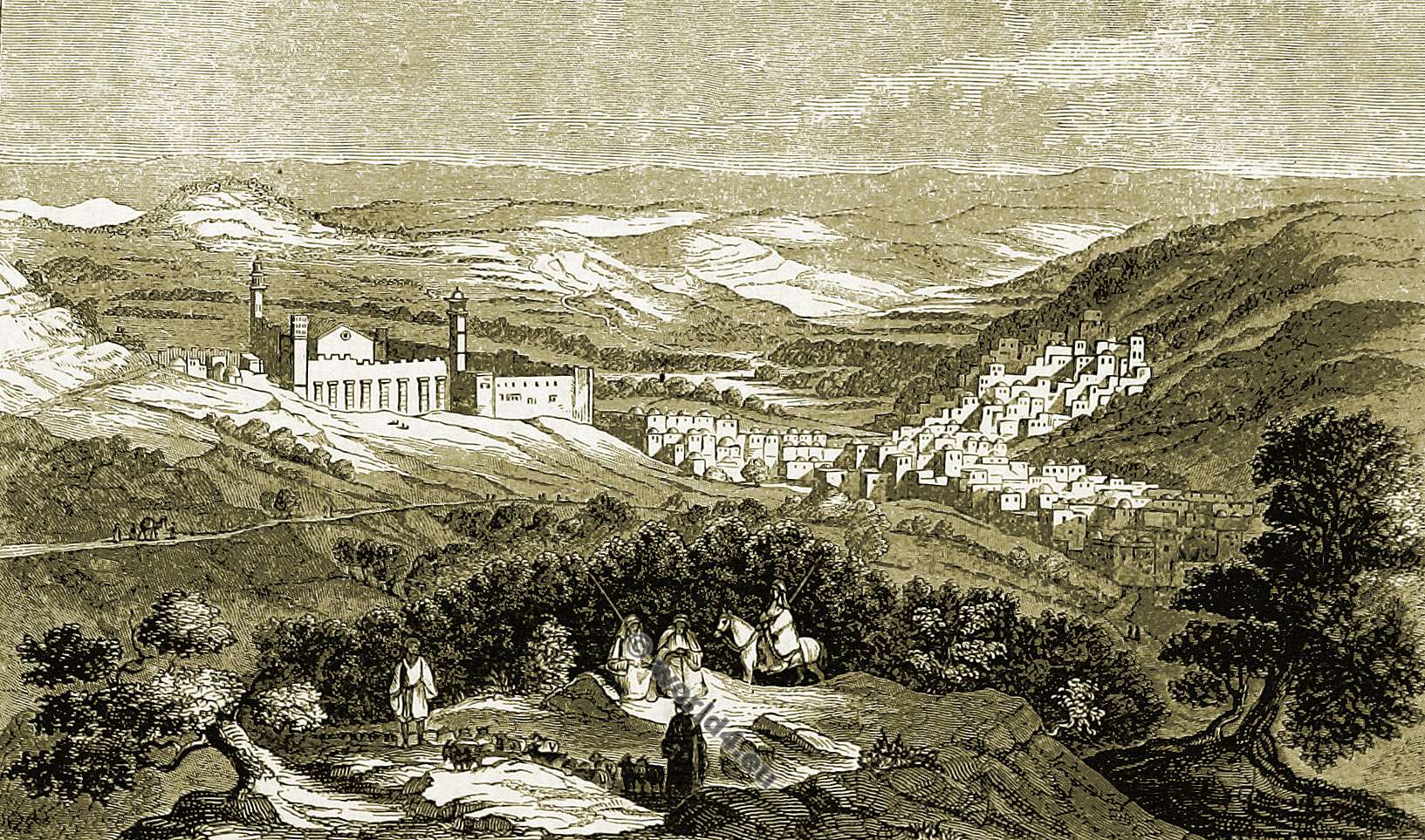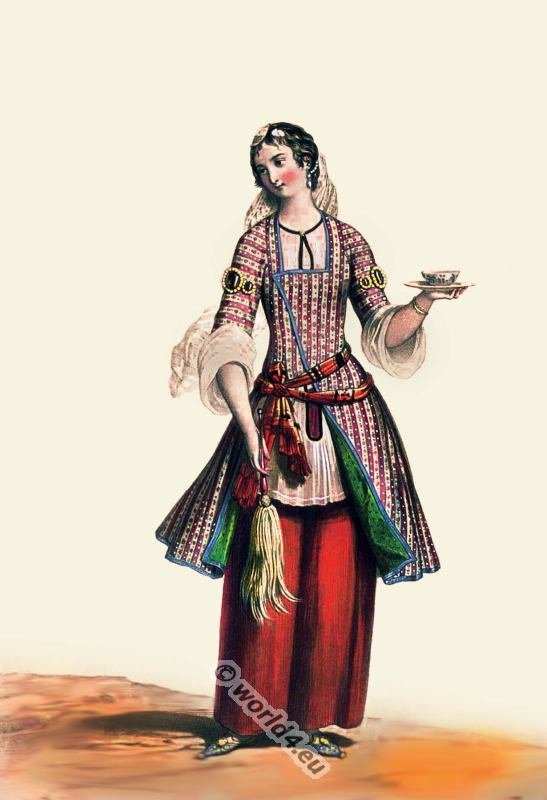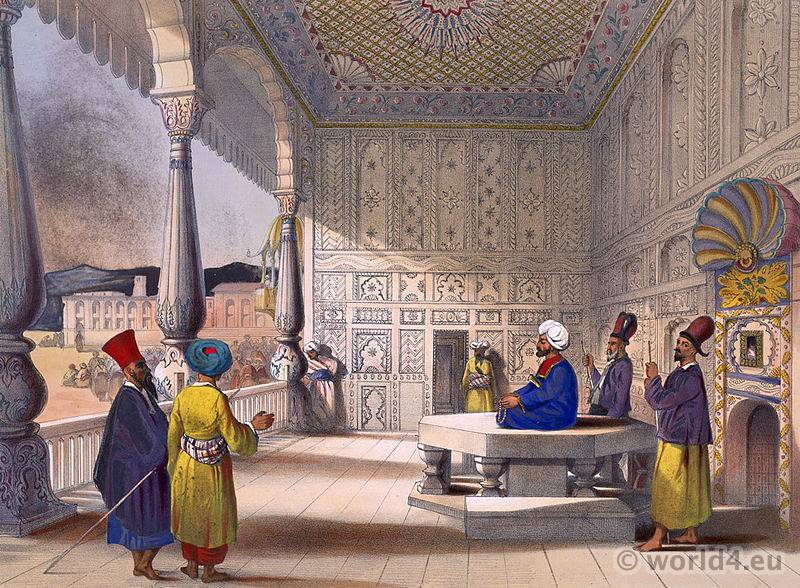
THE COURT OF PERSIA. THE SHAH OF PERSIA.
This Oriental monarch appears, as represented in the engraving, on a state occasion, at his court, wearing his triple crown, radiant and sparkling with precious gems and innumerable diamonds of the purest water, and of immense value, which blaze around his neck, shoulders, and arms; thus exhibiting and illustrating the splendor of Oriental magnificence. As an Oriental monarch over the Empire of Persia, and recently at war with England, whose ambassador was received, a few months since, with great consideration at the Imperial Court of France, his portrait in the splendor of Eastern costume is an object of interest anti curiosity, with which we trust our readers will be pleased. We only add a brief biographical sketch of this illustrious personage.
The present sovereign, Mohammed Nassr-ed-din-Shah (Nāser ad-Din Schāh, Shah of Persia from 1848 to 1896), ascended the throne in April, 1849. He was then sixteen years of age, and lived away from the court with one of his uncles, the governor of Tabriz. He succeeded to the throne in virtue of his being the nearest of kin in the collateral line of the celebrated Feth ali-Shah, or Babakhan. Nassr-ed-din-Shah is the fourth sovereign of the Turcoman dynasty of the Kadjars, the origin of whom is curious. The dynasty which preceded that of the Kadjars was founded in the following manner: Under the reign of the Sophis there lived a camel-driver whoso bravery procured for him the obedience of a number of his companions, who formed themselves into a band, and under his direction, crowned several most successful expeditions with the conquest of the province of Khorasan.
Their leader, Nadir, usurped the throne of Persia on the death of Abas III., and caused himself to be proclaimed Shah, or Sovereign of Persia. Nadir Shah brought under subjection Candahar, Cabul, and several provinces of the Mogul Empire. He was killed, in 1747, by his first lieutenant, whose eyes he had the intention of putting out. His successor, Thamasp-Kouli Khan II. (Tahmasp Quli Khan, also known as Nader Shah), reigned only a few years. Fearful disorders broke out at his death in Persia, and several pretenders to the throne arose. Amongst these was a member of the tribe of Qoyunlu, branch of the Qajar tribe, which signifies fugitives, named Mohammad Hasan Khan, who conquered Mazandaran (Māzandarān, also Masanderan) and other provinces, and captured Isfahan; he was on the point of conquering all Persia when he fell into the hands of a rival, who beheaded him in 1758.
His son, Aga Mohammed Khan, succeeded in proclaiming himself Shah of Persia, in 1794, and he founded the present dynasty. Since 1705, the Court of Persia resides at Teheran; formerly Isfahan had been the capital of the kingdom. In summer the court is driven a way from Teheran by the heat, and encamps from June first. to September thirtieth at the foot of the Elburz Mountains, in the valley of Goolahek. The ambassadors and great authorities, with the richest inhabitants of the town, accompany the court, and form a magnificent canvas town.
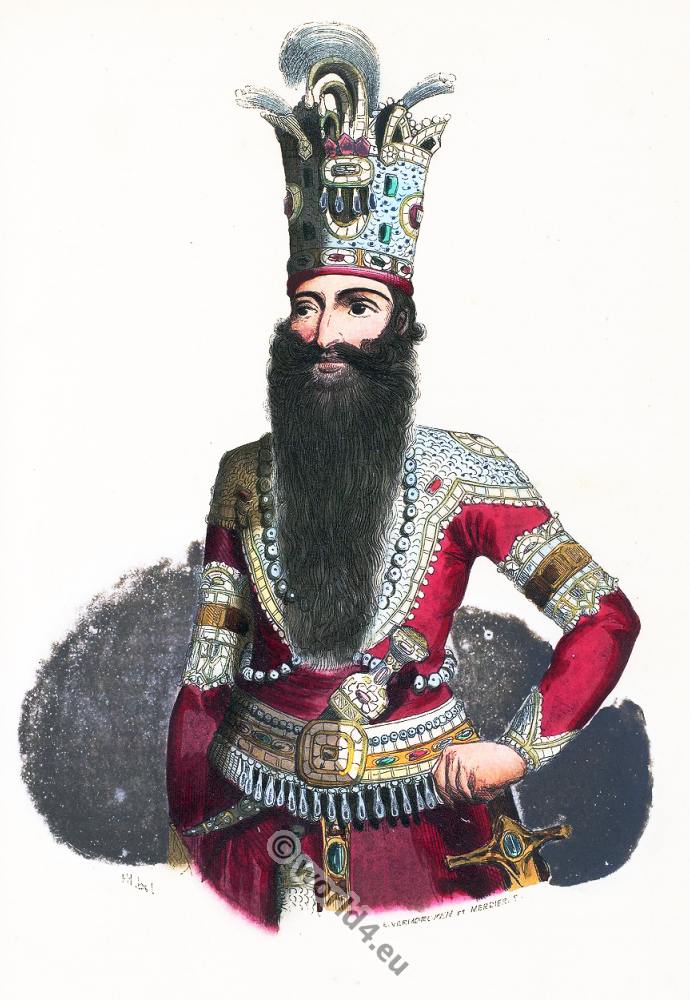
The present Shah is of a very mild disposition, and is deeply attached to his mother, who governs his private household. She is only about forty years of age, and is still very beautiful. She has for a secretary a French woman, who married, in Paris, a Persian nobleman, and accompanied her husband to his native home, after having embraced his religion. The Shah has five children, to whom he is greatly attached.
Feroukh Khan (Amin od-dowleh, 1812-1871), the Persian ambassador to Paris, on his arrival some time since handed to the Emperor, in the name and on the part of his sovereign, the Royal Order of Persia, and presents for the Empress and the Imperial Prince.
The ambassador wore a magnificent cashmere gown, trimmed with fur, and ornamented with diamond clasps, white kerseymere pantaloons with gold stripes, and the Astrakan cap. Two of his suite wore the same costume. He wears a beard, black and rich, such as few diplomatic chins could grow. His eyes are black, piercing, and his figure graceful. Among those who accompany him are said to be two cousins of the Sovereign of Persia; and they wear a white scarf over their rich uniforms, no doubt as a sign of their being “born in the purple chamber.”
Source:
- Imperial courts of France, England, Russia, Prussia, Sardinia, and Austria by Walter Hilliard Bidwell. New York: C. Scribner, 1863.
- Asian costumes by Auguste Wahlen. Manners, customs and costumes of all peoples of the world.
Related
Discover more from World4 Costume Culture History
Subscribe to get the latest posts sent to your email.

